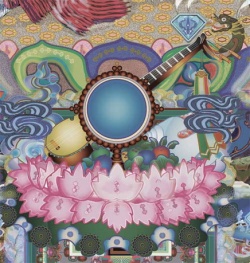Two extremes
Jump to navigation
Jump to search
Two extremes (Skt. divyanta or antadvaya; Wyl. mtha 'gnyis) — eternalism and nihilism.
From a Buddhist perspective, all non-Buddhist philosophies are considered to fall into either of these two extremes. Even within Buddhism, there is an attempt by each philosophical school to avoid these extremes and to point out how other schools have to do so.
In the King of Samadhi Sutra, the Buddha said:
- Existence and non-existence are extremes,
- Purity and impurity are extremes as well,
- Thus, having relinquished both extremes,
- The wise do not dwell even in the middle.
Nagarjuna wrote:
- To say “it is” is a conception of permanence,
- To say “it is not” is a view of nihilism,
- Therefore the learned should dwell
- In neither existence nor non-existence.
How the Four Schools Avoid the Two Extremes
- The Vaibhashikas avoid the extreme of eternalism since the cause has ceased at the time of the effect. They avoid the extreme of nihilism since the effect arises directly after the cause.
- The Sautrantikas avoid the extreme of nihilism since the continua of unconditioned phenomena exist uninterruptedly. They avoid the extreme of eternalism since these phenomena are momentary.
- The Chittamatrins avoid the extreme of eternalism since the imaginary/imputed nature is not truly existent. They avoid the extreme of nihilism since the dependent nature is truly existent.
- The Madhyamikas avoid the extreme of nihilism since all phenomena exist conventionally. They avoid the extreme of eternalism since phenomena are ultimately non-existent.
Two extremes in the Sutrayana
In the Dhammacakkappavattana Sutta in the Pali Canon, the first teaching the Buddha gave after his enlightenment, he speaks of the Middle Way, the path of practice that avoids the two extremes of sensual indulgence on the one hand, and severe asceticism on the other.
